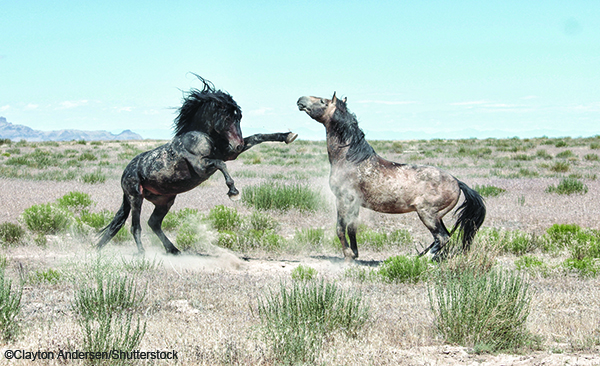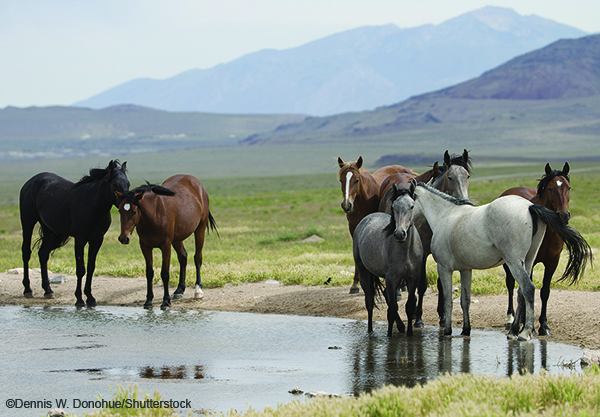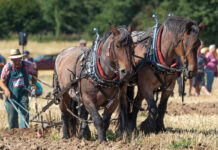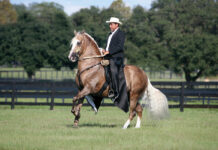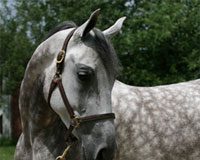Although equines originally lived on the continent, horses had become extinct here by the time Spanish explorers arrived on the shores of the New World in the 16th century. The ancestors of today’s horse had traveled across the Bering Land Bridge into Asia, where they thrived.
When Christopher Columbus arrived in the Americas on his second expedition, he had
horses with him. These Iberian-bred horses were the first of their kind to set foot on the continent since the species had disappeared in the Americas thousands of years ago.
Within 200 years, the horses had flourished on the North American continent with the help of the Pueblo Indians of the Southwest. Responsible for caring for the Spaniards’ horses, the Pueblo people secretly learned how to ride.
When the Spaniards were expelled from the Southwest during the Pueblo Revolt, many of the horses remained. The Pueblo tribes became adept horsemen, and over time, horses spread north to the Plains tribes and those in the Pacific Northwest. By the 1800s, Native Americans throughout the West had made the horse an integral part of their culture.
As the horse spread through North America, individual animals escaped into the wild. By the 1800s, the mountains, deserts and prairies were full of feral horses, all descendants of the original Spanish mounts brought to the New World.
The Mustang Today
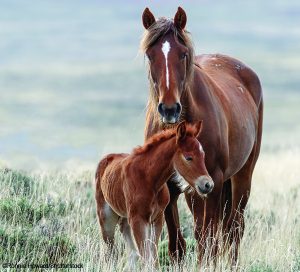 The descendants of these great Spanish herds, along with thousands of horses that escaped or were set loose during the 1800s, still roam free in the American West. Once the victims of people who rounded them up for slaughter, today’s wild horses are protected by the 1971 Wild Free-Roaming Horses & Burro Act. That law charged the Bureau of Land Management (BLM) with the management of the wild herds.
The descendants of these great Spanish herds, along with thousands of horses that escaped or were set loose during the 1800s, still roam free in the American West. Once the victims of people who rounded them up for slaughter, today’s wild horses are protected by the 1971 Wild Free-Roaming Horses & Burro Act. That law charged the Bureau of Land Management (BLM) with the management of the wild herds.
In order to manage the number of wild horses living on 26.9 million acres of federal land across 10 western states, the BLM conducts regular roundups within 177 herd management areas. These horses are put up for adoption to the public through the Wild Horse & Burro Program.
Anyone can adopt a wild horse as long as the adopter meets certain qualifications. You must be at least 18 years of age, must be able to provide a minimum 400 square-foot (20′ x 20′) enclosure per horse, and be able to prove you can provide adequate feed, water, facilities and humane care.
Since the wild horse adoption program began in 1971, approximately 245,000 Mustangs have been adopted out to new homes. While most of these horses have been enjoyed as trail mounts, recreational riding horses and companions around the country, many have gone on to successfully compete in a number of different disciplines, including dressage, eventing, gymkhana, cow work and more.
Mustang Makeovers
To help promote the reality that adopted wild horses make great mounts, the Mustang Heritage Foundation, a non-profit organization developed to help increase the number of successful BLM wild horse adoptions, started the Mustang Makeover project in 2006.
The first Extreme Mustang Makeover event was held in Fort Worth, Texas, featuring 100 horse trainers and 100 previously wild Mustangs. The trainers were given 100 days to gentle and train their Mustangs then showcase what the horse had learned at the Fort Worth event. The horses were then auctioned off to adopters.
The event was a huge success. Since the first Mustang Makeover, such events have been held in 15 different states, showcasing the talents of adoptable wild Mustangs before thousands of horse lovers. The Mustang Heritage Foundation has since added youth, veteran and trainer incentive programs to help promote adoptions.
In 2013, the Mustang Heritage Foundation held the Mustang Million event in Fort Worth, featuring $1 million in prize money for the training of BLM mustangs. Trainers and adopters were able to select and adopt the Mustang of their choice from one of seven adoption auctions around the country.
Trainers had just over 120 days to prepare the horse for classes and divisions of their choice. When it was all over, 562 Mustangs, yearlings to age 6, were placed into adoptive homes through the Mustang Million.
Today, the Mustang Heritage Foundation continues to promote the training and adoption of wild horses through its various programs. So far, nearly 10,000 Mustangs have found homes through the organization.
Mustangs have a rich heritage; their ancestors were Spanish war mounts, homesteader workhorses and Native American ponies. They helped tame the Wild West and are living symbols of America’s romantic past. A product of their natural environment, they are also incredibly hardy and rugged, with tremendous endurance and an instinctive intelligence. These traits all add up to an extraordinary equine companion, no matter your discipline or sport.
AMERICAN MUSTANG FAST FACTS
Height: Predominantly 14 to 15.3 hands; some individuals shorter or taller.
Color: Any horse colors and patterns are acceptable.
Overall Appearance: American Mustangs have different body types, depending on their ancestry. Heavy draft horse build, compact Spanish type, and well-muscled Quarter Horse types are all seen.
ASSOCIATIONS
Bureau of Land Management Wild Horse & Burro Program
www.blm.gov/programs/wild-horse-and-burro
Mustang Heritage Foundation
www.mustangheritagefoundation.org
North American Mustang Association & Registry
www.namarmustangs.com
U.S. Wild Horse & Burro Association
www.uswhba.org
American Mustang & Burro Association
www.ambainc.net
AUDREY PAVIA is a freelance writer and the author of Horses for Dummies.
This article originally appeared in the July 2019 issue of Horse Illustrated magazine. Click here to subscribe!

